
|   |

|   |
November 1, 2016  div align="justify">
div align="justify">A JOYOUS FESTIVAL SEASON TO ALL DANCE FANS ACROSS THE CYBER UNIVERSE! The dancer is an aesthetic acrobat Has to be A quarter of an inch makes a difference That kind of exactitude makes it professional I know it hurts... it is hard You didn't think it would be fun did you? Dance and be HAPPY???? - American composer Louis Horst (1884 - 1964) Music Director for Denishawn Company and Composer for Martha Graham 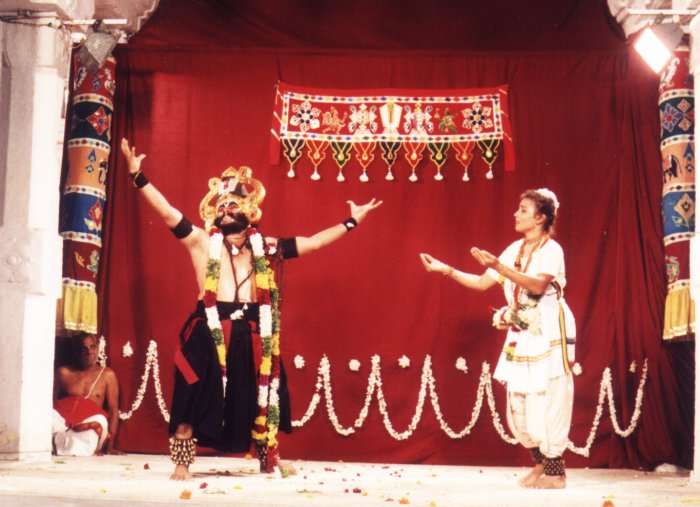 You are reading this while I am in sunny southern California - SoCal for short. Presenting an important paper for CORD/SDHS at Pomona College, I am joined with the empathetic and astute academic Dr. Ketu Katrak of the University of California, Irvine. Together we have created a template that documents and shares my journey over the past 22 years in reviving and restaging the 15th century ritual KAISIKA NATAKAM that is performed annually at my ancestral village temple in Tirukurungudi, Tamilnadu. Wherever we have made this presentation - Stockholm, Santiago, Barcelona and now in Pomona, erudite audiences have watched and listened in rapt attention. Granted, some find the layered braiding of religion, performance, festival, celebration and social gathering a tad too "enthusiastic" for their austere faith beliefs, but it is this very "quilting" that makes performance traditions so rich and intense in a society like India. #NO WAY BACK 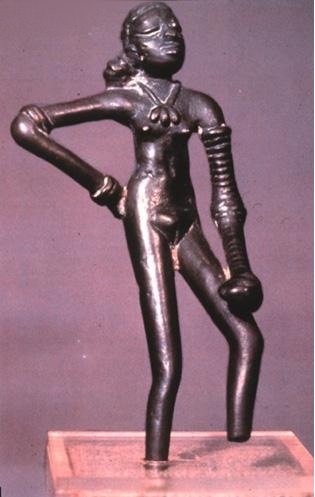 Confidence is a thing to behold! Nowhere is it more dazzling than in the 10.5cm bronze statuette from 2500 BC Mohenjodaro in modern Sindh, Pakistan. It turns out that Pakistan now wants the "DANCING GIRL" back. This ancient girl with her hand on her hip in a proto punk-chick way is the image that scholars and savants recall again and again to cite the historic origins of classical dance in India. The statuette was brought to India in 1946 before the Partition along with another figurine called THE KING PRIEST. "He" has been returned after Partition. The "girl" remained. Of what use is this image to Pakistan where dance and music in public spaces are banned? My vote is for her to remain at the National Museum in New Delhi and for dancers who live in the city to at least make one visit in their lifetime to see her. Instead of those boring selfies that we are inundated with on social media, a visit to one of India's best maintained museum is a highly recommended outing. Meanwhile, "SHE" continues to stand - radiating 'chutzpah', with the silent words "I belong to no one!" #NON INDIANS SHINING 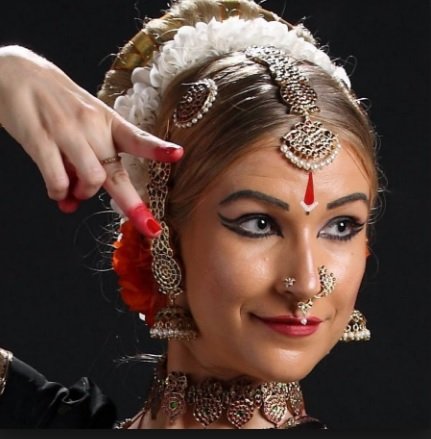 On Vijayadasami/Dussera day-October 11, hundreds and thousands of dancers and musicians paid their respects to their gurus and teachers. Bearing gifts of fruits, garlands and sweets, it was a day when the precious art of knowledge is honoured. Over the years and with the globalization of India's dance traditions, I have observed that two countries have produced students who stand apart in dedication, diligence and rigour. Germany and Japan. Ask any teacher and they will wax eloquent about the superb focus, attention to detail, punctuality and fanatic dedication these two countries have instilled in their citizens. No distractions of mobile phones going off during classes, lame excuses given to avoid rehearsals or coming late to class - none of these lazy "chalta hai" "adjust madi" attitudes occur during intense training sessions. One can expand the compliments to other countries like Russia, Poland and Serbia. Former Communist societies and those ravaged by war seem to embrace the dense and lush beauty of our classical traditions better than we do at home. Be it yoga, dance, music or even ayurvedic studies, many non-Indian students are the favourites of many gurus across India. The major drawback that is cited among these "foreign" dancers is that their facial features and natural social habits do not induce the nuanced facial and neck 'abhinaya' movements that is required for the love-soaked / emotion laden poetry that is the spine of the classical repertoire. But, my argument is how many NRI Indian kids and urban kids in India actually "use" their hands and necks the way our elders did? The way today’s young dress, walk, gesture and sit is so global-generic that it is an uphill task to even teach them how to look shy or coy! #NAVARASA MAPPING 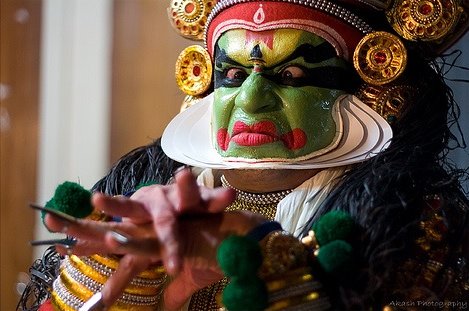 While scientists and astrophysicists continue to explore the concept of "multiverse", there are some who are studying how to map the neurons of the human brain for emotions. Professor Priyamvada Natarajan of Yale University, a former Bharatanatyam student, speaks excitedly about creativity and resistance to change in her new book MAPPING THE HEAVENS. In one of her many fascinating talks she spoke of how long held theories were very hard to change or declare "outdated" and that the human brain's response to emotions is among the most fascinating of neurological studies. So imagine if we knew how many neurons were needed to fire to reproduce "ANGER". #DANCE AND DEMENTIA Have we ever considered how powerful muscle memory can be? The Rubin Museum in NYC had a fascinating project of giving dancers with dementia and Alzheimers, an IPod loaded with music from their teenage and "tween" years. Just writing about this reminds me of the body's inherent intelligence and the validity of "muscle memory." Neuromovement is the latest buzz word in the psychiatric and scientific community. Recognizing the brain's ability to define health, wellness and longevity. No wonder American choreographer Twyla Tharp was interested in Harvard Medical School using her "body of knowledge" for their research! #GATI-IGNITE 2016 What constitutes DANCE? What can we define as modern and contemporary dance in India? While these were not the overriding questions of the recently concluded festival in New Delhi, the well curated event brought a small but highly involved crowd over 10 days in October. Located in the newly opened ODD BIRD THEATRE on the city's outskirts, the festival threw up many questions about the new directions of what was "acceptable" as new dance in India. Some overseas visitors did complain of too much "walking around and talking" instead of dancing, but my questions are slightly different. Is syncopated JUMPING considered "new"? Is casual throw away movement being read as "modern"? Is there a conscious breaking away from all the alleged "Effete" and "posing" of classical Indian dance? The festival event drew a large and diverse set of performers and choreographers. I was pleased to see Sujata Goel's DANCING GIRL that was created at ADISHAKTI many years ago and has since developed into a really interesting commentary on urban Indian angst. Preethi Athreya's JUMPING PROJECT continues to defy all closely guarded beliefs of choreography and dancing. I was recalling French choreographer Jerome Bell's recent presentation THE SHOW MUST GO ON. Using only popular American songs, he casts every day people and uses them to show a mirror to the audience. It was 90 min self indulgent torture for me and many Americans in the audience quietly fled after 30 minutes. The French stayed and loyally gave him a standing ovation. In the talk back session Bell shared his love for Carnatic music but explained why he needed to "give" the audience something familiar to hold on to with the popular Broadway and show tunes while seemingly NOTHING was happening on stage!I was forced to ask myself if my preconceived notions of dance hindered my appreciation of anything new and modern that is being presented in stage. "We see today with the eyes of yesterday" - Pablo Picasso 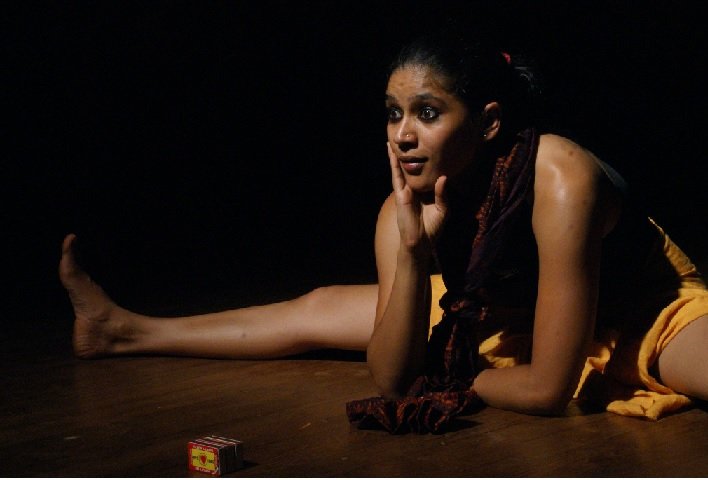 Nimmy Raphel IGNITE 2016 had plenty to offer the viewer. For a start, it was evident that the 10th anniversary of Chandralekha's passing has seen a resurgence of interest in her work. SHARIRA, created in 2001 has toured more frequently this year than ever before. Professors from New Delhi's Jawaharlal Nehru University (JNU) spoke about how we all have to rethink the words STRIKE and MOVEMENT after the historic events of Feb 2016 when students and faculty protested against the government. A BOUQUET OF FISTS became the symbol of the protest - MUSHTI HASTA in a totally different context. So "striking a pose" and "dance as movement" could and must be recast against the light of migration, refugees and global unrest. Veenapani Chawla's last directorial work NIDRAVATVAM performed by the incandescent Nimmy Raphel continued to charm and fascinate audiences with its seamless exploration of traditional and contemporary references laced with regional humour. Interesting how two seminal thinkers - Chandralekha and Veenapani - continue to imprint their ideas about dance, theatre, performance, presentation on the edges of dance, theatre and politics. As one section of Chandra’s famous choreography SRI will be remounted on a new generation of dancers this December, Veenapani's ADISHAKTI company is busy touring the world and sharing her pedagogic style of creation. One used Bharatanatyam, Kalari and Yoga (Chandralekha) and the other worked with Mizhavu drumming, breath, Nangiar Koothu and Koodiyattam (Veenapani). Clearly evident at the GATI/IGNITE event was the passionate embracing of politics in many of the presentations. Dancers and choreographers spoke about women's issues, violence, homosexuality and several other social phenomena that impacted their creative process. The glaring example of classical dancers being out of touch with present day concerns emerged in the session about PEDAGOGY AND TRANSMISSION that featured Justin MaCarthy, Priyadarsini Govind and Rekha Tandon. The question posed to the panel was WHY classical dancers claimed that EVERYTHING could be contained in the tradition when war violence and unrest dominated the news. The response was a reference to a 2000 year old Tamil Sangam poem! Theatre and cinema tackle these concerns much more effectively! Rekha Tandon spoke about the classical dancer's body being a "yogic map" further pushing the discourse in veils of mysticism. Only Justin MaCarthy demonstrated how he trains non South Indian/Tamilian dancers in "abhinaya" and a simpler version of the opening "alarippu" without the double handed "natyarambha" or the "mandi adavu". A most interesting presentation! The highlight of the festival was the release of the book TILT PAUSE SHIFT- new ecologies of dance in India. Detailed essays about many individuals making a mark - some known names, other newbies in the publishing domain. Many omitted and the inclusion of both Nrityagram and film dancer Helen raised many questions as to why others were not included. The use of the word ECOLOGIES and not MODERN or CONTEMPORARY means that the field and discussion is still wide open and more writing is needed in this genre. Looking forward to Ketu Katrak and Astad Deboo's new volume on Contemporary Indian dance from the MARG publishing stable. #THE BARD BEYOND BRITAIN 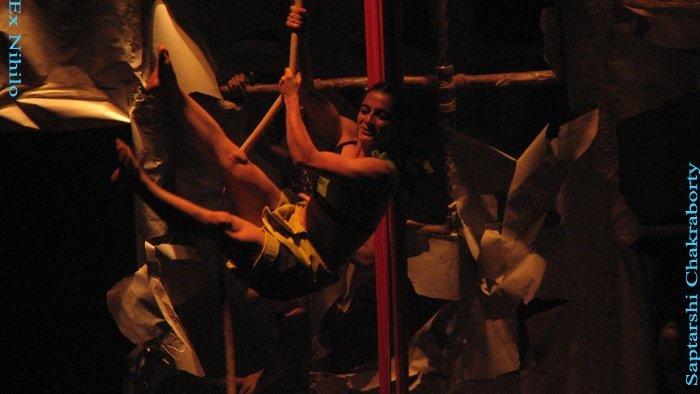 While this is the 400th year of Shakespeare’s birthday, many British theatre experts confess that the approach and treatment of his plays are often better outside Britain. Citing creative readings and interpretations of his works in India, China, Korea, Japan and South America, it seems that British audiences have a hard time understanding Shakespeare if the lines and acting are too far off from the original. The rest of the world has no problem turning the original "iambic pentameter" on its head. It cannot be translated into Indian languages or Chinese, thereby freeing the director to devise numerous creative ways in transcreating one of the famous plays. Kathakali was among the first theatre style to adapt Shakespeare- KING LEAR and OTHELLO were staged very successfully and British director Tim Supple created a marvellous pan-Indian MIDSUMMER NIGHTS DREAM using Tamil folk actors with the soundscape containing several South Indian languages. Annette Leday in Paris has created excellent productions with Shakespeare and other classics, the latest being currently on its India tour. Maya Krishna Rao has mined the Shakespearean high drama quotient in many of her solo productions using Kathakali as a base. Why not solo classical dance? The high emotions, the poetic soliloquies so rich in imagery are all ripe for the performer! #GENDER BENDER Cross dressing was a hallmark of many a Shakespearean play. In today’s politically correct world, there are several terms to describe Transgenders. The most demure term in Tamizh is "Tirunangai". 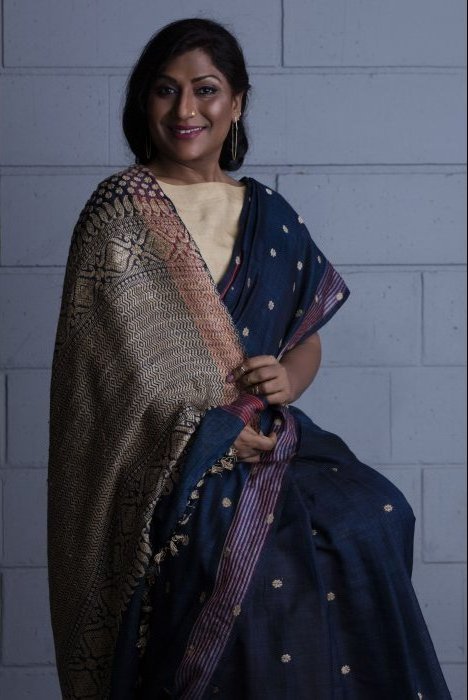 A celebrated representative of this community is Bharatanatyam dancer Narthaki Nataraj. Recently conferred an honorary doctorate by Periar Maniammai University, Tamilnadu, her journey has been long and often very stressful. I am among the few who met her when she first moved to Madras/Chennai from her home in Madurai. Along with her faithful partner Shakti, Narthaki was very hesitant of how the artistic community would accept her. I reassured her that this city would take its time but talent would be ultimately accepted and applauded. Chandralekha discovered that over time and so did Narthaki. Today she is a national award winner, a devout champion of Tamizh poetry as her repertoire and an example of how one can overcome social stigma and blind prejudice. One among four transgenders to model for Lakme Fashion Week to promote gender inclusivity in modern fashion, Narthaki has broken through and we applaud her courage! #FASHION AND FAITH 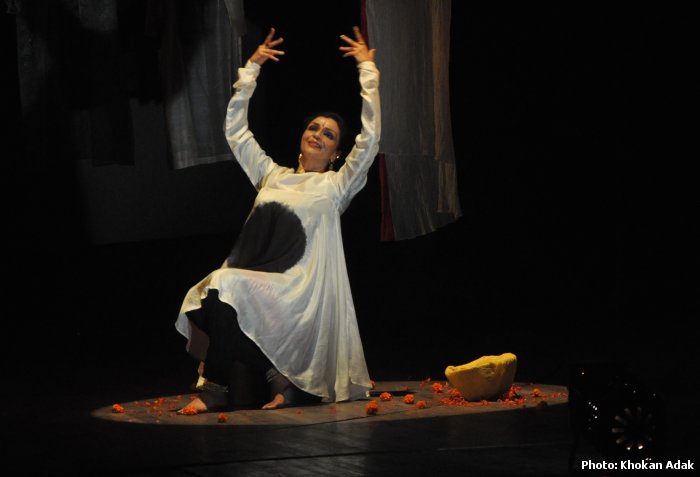 Two incidents triggered the following thoughts. During one of the Navaratri celebrations, I performed a short piece that knitted Tagore and Dikshitar's poetry for a Bengali Durga Puja Pandas in Chennai. The costume was designed by Kolkata based Paromita Bannerjee for my full length production called AVANI. The colours were white and black and the red necklace and long red bindi completed the traditional colours of Bengal for the occasion. After posting images on my personal Facebook page, one "friend" from the USA remarked that I should not have not worn an "Islamic" dress for the occasion! I wore a long kurta with a churidar, my favoured silhouette. A few days later, I was at Chennai airport wearing a long emerald green kurta and palazzo pants. While waiting for a flight two women approached me with the greeting "Salam alle kum". I replied "Namaste". They startled enquiring if I was Muslim. I said I was Hindu. They turned abruptly and walked away. I should have said "I am Indian." What has happened? Colours and silhouettes are now the property of faith and religion? Green is not just the colour of Islam. The Tamizh word "PACCHAI" means verdant, lush, virginal, innocent, auspicious. Goddesses ANDAL and MEENAKSHI are identified with this colour. My mind reeled back to the year 1985. I was filming walking down the large staircase of the Chicago Museum of Science and Industry for the Doordarshan Series of the Festival of India broadcasts. I was wearing a green silk churidar kameez outfit. After the first broadcast, I received a curt call from a senior official at Doordarshan New Delhi suggesting that I should henceforth avoid wearing a "Pakistani outfit and a Muslim colour!" 31 years ago the unrest over costume and colour arrived on my front door and filled my mind screen! On stage, green is one of the most attractive colours for an Indian dancer. Contrasted with orange, red or even mango/saffron, there are so many shades of green for a designer to choose from. Will that comment or thought be posed to a dancer in a classical costume? Or a woman wearing a green sari? A man in a green shirt? #NAMING AND SHAMING As you read this, all eyes are on the US elections. The discourse has been muddied with so much "naming and shaming" that most Americans are sick to their stomachs - worried about the course their country will take. I wonder if we in India can use this term to our dance and music world. As the annual Chennai season approaches do we have the courage to NAME AND SHAME? Greedy organisers who extract money from dancers Shameless dancers who readily pay for a slot Lecherous presenters who still use the casting couch for "curating" Lazy auditorium owners who do not provide the minimum facilities and hygienic conditions for the performer Corrupt critics who accept money and bribes to write falsely about a mediocre dancer Cowardly editors who abdicate responsibilities and leave the arts pages to be filled with "whoever-whatever" Arrogant junior dancers who walk around pretending that they have a hotline to Vyasa, Patanjali or Bharata! Lecherous middlemen who quote rates for Padma awards This is a wish list… Will the silence of complicity continue. Will anger, disappointment and frustration continue… I wish gurus would give their students a talk about ATTITUDE, BEHAVIOUR and CHARACTER- the first three alphabets of Dance! Seems more important today than teaching them yet another ITEM! An aside..... Time to smile - A Thai model protesting against bad roads wore a towel and a shower cap while bathing next to potholes. The video of this act went viral and forced Bangkok officials to repair roads. Will we have to dance in auditorium bathrooms to mend the atrocity?????? Now back to reading.... #CELEBRATION TIMES 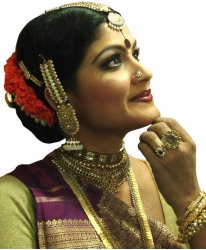 Geeta Chandran 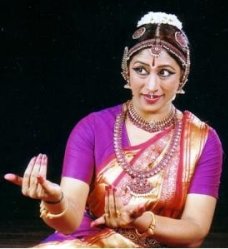 Meenakshi Chittaranjan It seems to be the moment for silver anniversaries. Many dancers and gurus are celebrating 25 years of their institution. Meenakshi Chittaranjan in Chennai and Geeta Chandran in New Delhi have completed this important milestone in their careers. Celebrations are ongoing and our best wishes to these wonderful artistes who have sown multiple seeds of cultural understanding through their teaching and performances. 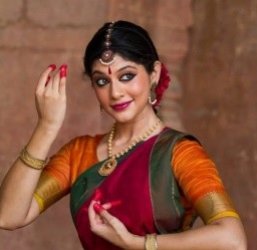 Dakshina Vaidyanathan 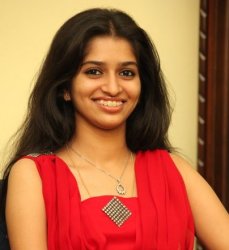 Sudharma Vaithiyanathan There are two more important moments of transition to share. Lovely Bharatanatyam dancers, Dakshina Vaidyanathan and Sudharma Vaithiyanathan are tying the knot. May they enjoy love and happiness as they step across the threshold into a new life. And may they receive support and encouragement from their new families in their artistic journeys. Dance is such a lonely and often, thankless life. How can a spouse truly understand the many demons inside a dancer's head? Only if "the other" is also a mad artiste. With the excitement of Navaratri and Diwali behind us, we have only 2 months remaining before a new year dawns. Planetary shifts indicate major changes in the world as power struggles will continue to dominate the headlines and attempt to push the arts into further dark corners. So rapturous news of Akram Khan's new age choreography of GISELLE for English National Ballet comes as welcome news. Set in a Bangladeshi garment factory, the sold out tour has been acclaimed as "one of the most important choreographies of the century" by British media. Aditi Mangaldas continues to wow UK audiences with her newest INTER-RUPTED and Prathibha Prahlad returns to don the mantle of the Hampi festival that she created 2 decades ago. Kalakshetra has impressed Australian audiences with their time honoured Ramayana dance drama. So there IS much cheer and hope afloat! A wish across the cyber galaxy to all those who love, perform, teach, watch, support and nourish the live arts. Thank you for your faith and presence! A special greeting to the MILLENIALS out there... who have so much to choose from and who must take a moment to acknowledge the abundance of new pathways open to them. Meanwhile let's unclog our phones of those zillion WhatsApp and instagram messages. Let's wash the Halloween paints off our faces. Let's light up our limbs with movement. Be gentle with our spirit. E M E R G E..... A N E W!!!! Dr. Anita R Ratnam When women vote women win Chennai / Kolkata Twitter: @aratnam Facebook: Anita R Ratnam Instagram: @anitaratnam Blog: THE A LIST / anita-ratnam.blogspot.in Post your comments |